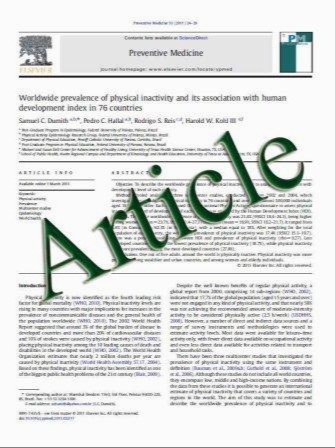FOXO3a nuclear localisation is associated with good prognosis in luminal-like breast cancer
- نوع فایل : کتاب
- زبان : انگلیسی
- مؤلف : Hany Onsy Habashy , Emad A. Rakha , Mohammed Aleskandarany, Mohamed AH Ahmed , Andrew R. Green , Ian O. Ellis , Desmond G. Powe
- چاپ و سال / کشور: 2011
Description
Oestrogen receptor (ER)-positive breast cancer (BC) constitutes a heterogeneous group of tumours with regard to outcome and response to therapy. Accurate stratification of ER-positive BC according to risk of relapse and response to therapy will be achieved through an improved understanding of ER and ER-related biological pathways. Recent studies have identified Forkhead box O3a (FOXO3a) transcription factor as an intracellular mediator of ERa expression and as an important downstream target of the Akt/PI3K pathway indicating a biological and potential clinical role for FOXO3a in ER-positive BC. In this study, we investigated the clinical relevance and biological associations of FOXO3a protein expression, using tissue microarrays and immunohistochemistry, in a large series of patients with invasive breast cancer. FOXO3a protein expression showed both nuclear and/or cytoplasmic staining patterns. FOXO3a predominant nuclear expression was positively associated with biomarkers of good prognosis including PgR, FOXA1 and p27 expression. There was an inverse association with mitotic counts, MIB1 growth fraction, C-MYC and PIK3CA expression. With respect to patient outcome, FOXO3a nuclear localisation was associated with longer BC specific survival (P\0.001) and longer distant metastasis free interval (P = 0.001), independently of the well-established breast cancer prognostic factors. In conclusion, our results demonstrate the biological and prognostic role of FOXO3a protein expression and its subcellular localisation in ER-positive/luminal-like BC possibly through its involvement in controlling cell proliferation.
Breast Cancer Res Treat (2011) 129:11–21 Received: 9 October 2009 / Accepted: 2 September 2010 / Published online: 19 February 2011 Springer Science+Business Media, LLC. 2011


